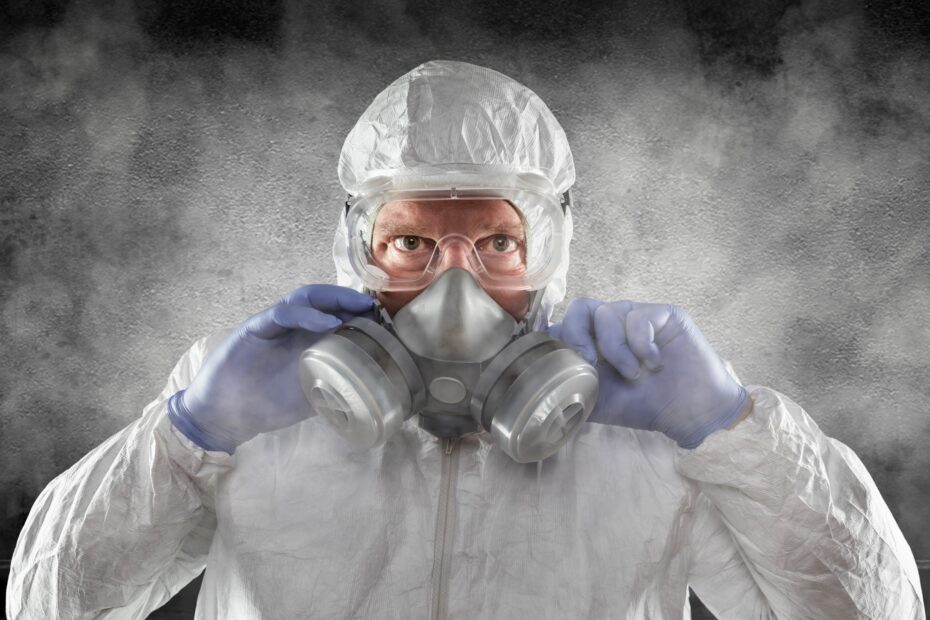Work related injuries associated with respiratory protection in 2021 was the second most cited OSHA standard.
Millions of workers are required to wear respirators including firefighters, asbestos abatement workers, and painters to name a few. All with different levels of respiratory protection being necessary.
Compliance with the OSHA respiratory protection standard saves hundreds of lives each year and prevents thousands of illnesses according to OSHA. (https://www.osha.gov/respiratory-protection)
There are different types of respirators that can be used depending on the level of protection needed. There are 2 main types of respirators. The first type protects by removing contaminants from the air and filtering out chemicals and/or gasses. Examples include air-purifying respirators and particulate respirators. The second type protects by supplying clean air from an external source. This includes airline respirators and self-contained breathing apparatus or SCBA which include their own air supply. OSHA covers respiratory protection in General Industry 1910.134, Construction 29 CFR 1926.103, and Maritime standards 1915.154, 1917.92, and 1918.102.
Why so many violations?
One reason that the respiratory protection standard receives so many violations is because it is a complex standard. There are over 150 separate provisions within 13 major sections of the standard. It can be difficult to comply with every single one of the separate provisions. Citations range from failure to have a written program to failure to provide medical examinations to failure to fit-test properly. Workers are required to be medically evaluated by a physician or other licensed healthcare professional to determine the ability of the worker to use a respirator. Once it has been deemed that the worker is fit to use a respirator, a fit test is required prior to allowing the worker to use a respirator. The employee must be fit tested with the same make, model, style, and size of respirator that will be used. The employer should ensure that an employee using a tight-fitting facepiece respirator is fit tested prior to initial use of the respirator. If a company needs to do the top 2, then a written respiratory program is required. If you need help developing a written respiratory protection program, we can help.
Another thing to remember is that respiratory protection is used as a line of defense only when engineering and administrative controls are not feasible or when the implementation of them does not adequately eliminate the hazard.
Once you’ve got your key components in place, make sure to maintain respirators by inspecting, cleaning and disinfecting them. Inspections should be conducted prior to use and cleaning and disinfecting should take place after each use.
Some other things to keep in mind:
- Only authorized and trained employees should use Respirators.
- Employees should only use the respirator that they have been trained on and properly fitted to use.
- Only physically qualified employees should be authorized to use respirators.
- Ability and authorization to wear a respirator has been determined through a medical evaluation.
- Make sure correct types of respirators are selected for the type of exposure risks
- Only SCBAs will be used in oxygen deficient environments, environments with an unknown hazardous substance or unknown quantity of a known hazardous substance or any environment that is determined “Immediately Dangerous to Life or Health” (IDLH).
- Respirators should be stored in a clean, convenient and sanitary location away from heat, light or chemicals.
- Check the respirator for a good fit before each use. Positive and negative fit checks should be conducted.
- Check the respirator for deterioration before and after use. Do not use a defective respirator.
- Recognize indications that cartridges and canisters are at their end of service. If in doubt, change the cartridges or canisters before using the respirator.
- Practice moving and working while wearing the respirator so that you can get used to it.
If you need help developing a comprehensive written respiratory protection program, or if you need to implement a training program, JJ Safety can help. We also have online training options.
Give us a call at 866-627-3850 or email us at sales@jjsafetyllc.com to learn more.
